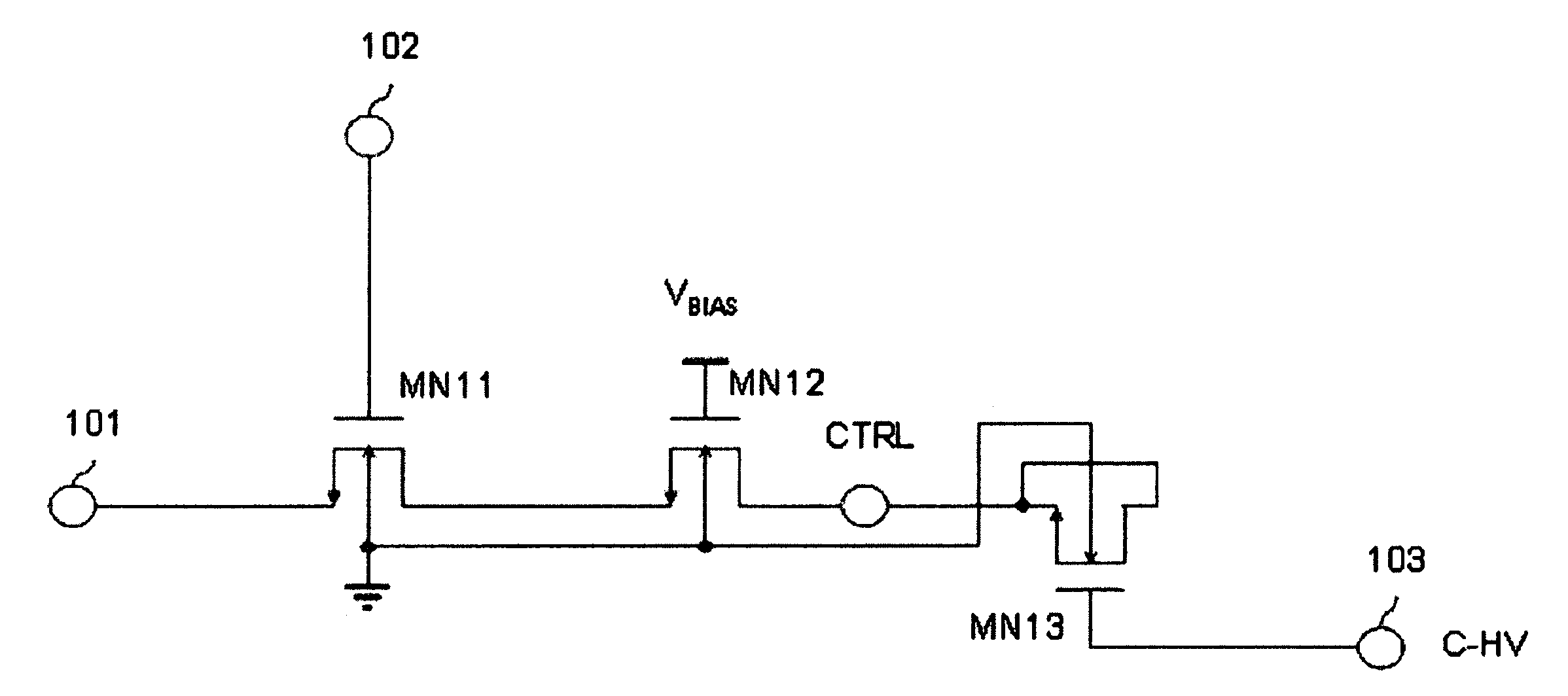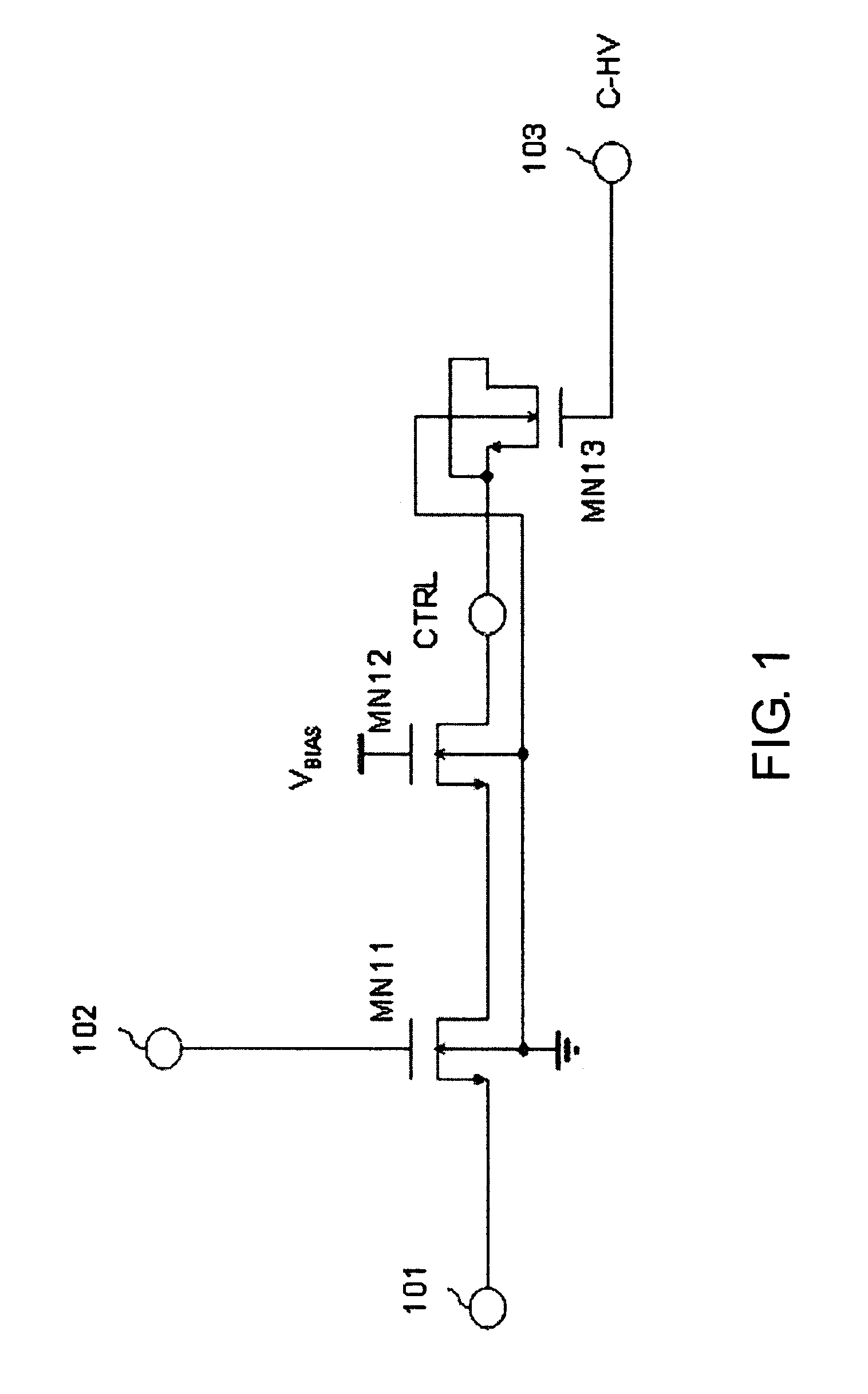3-transistor OTP ROM using CMOS gate oxide antifuse
a technology of gate oxide and otp rom, which is applied in the field of one-time-programmable otp roms using cmos gate oxide anti-fuses, can solve the problems of difficult to obtain uniform breakdown properties, poor anti-fuse properties, and additional processes, and achieves the effect of higher integration
- Summary
- Abstract
- Description
- Claims
- Application Information
AI Technical Summary
Benefits of technology
Problems solved by technology
Method used
Image
Examples
Embodiment Construction
[0040]The present invention will now be described in detail in connection with preferred embodiments with reference to the accompanying drawings.
[0041]FIG. 1 is a circuit diagram showing the construction of a 3-transistor OTP ROM cell according to an embodiment of the present invention.
[0042]Referring to FIG. 1, the OTP ROM cell according to an embodiment of the present invention includes three input terminals 101 to 103 and three nMOSFET devices MN11 to MN13.
[0043]The interconnection relationship among the components will now be described.
[0044]The first NMOS transistor MN11 has a gate for forming the second input terminal 102, and a drain connected to a source of the second NMOS transistor MN12. Also, the source of the first NMOS transistor MN11 forms the first input terminal 101. The second NMOS transistor MN12 has a gate to which a bias voltage VBIAS is applied and a drain connected to a control terminal CTRL of the third NMOS transistor MN13. A gate of the third NMOS transistor...
PUM
 Login to View More
Login to View More Abstract
Description
Claims
Application Information
 Login to View More
Login to View More - R&D
- Intellectual Property
- Life Sciences
- Materials
- Tech Scout
- Unparalleled Data Quality
- Higher Quality Content
- 60% Fewer Hallucinations
Browse by: Latest US Patents, China's latest patents, Technical Efficacy Thesaurus, Application Domain, Technology Topic, Popular Technical Reports.
© 2025 PatSnap. All rights reserved.Legal|Privacy policy|Modern Slavery Act Transparency Statement|Sitemap|About US| Contact US: help@patsnap.com



